Kingdom Plantae Family Crassulaceae Scientific name Kalanchoe daigremontiana Rank Species | Order Saxifragales Genus Bryophyllum Higher classification Widow's-thrill | |
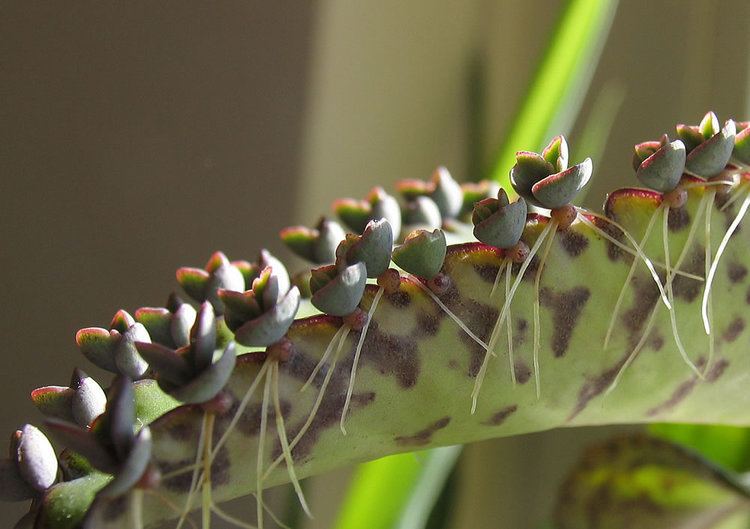 | ||
Similar Widow's‑thrill, Bryophyllum, Bryophyllum pinnatum, Bryophyllum delagoense, Crassulaceae | ||
Bryophyllum daigremontianum, commonly called devil’s backbone, mother-of-thousands, alligator plant, or Mexican hat plant is a succulent plant native to Madagascar. Like other members of its genus Bryophyllum, it is able to propagate vegetatively from plantlets that develop on its phylloclade margins. All parts of the plant contain a very toxic steroid known as daigremontianin
Contents
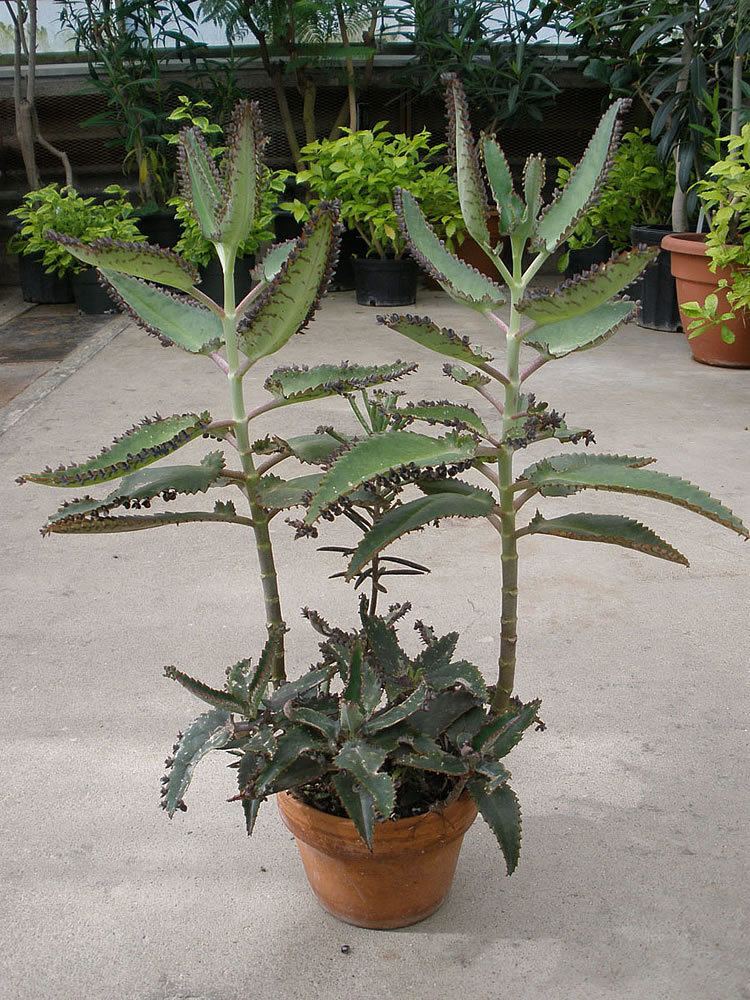
Taxonomy
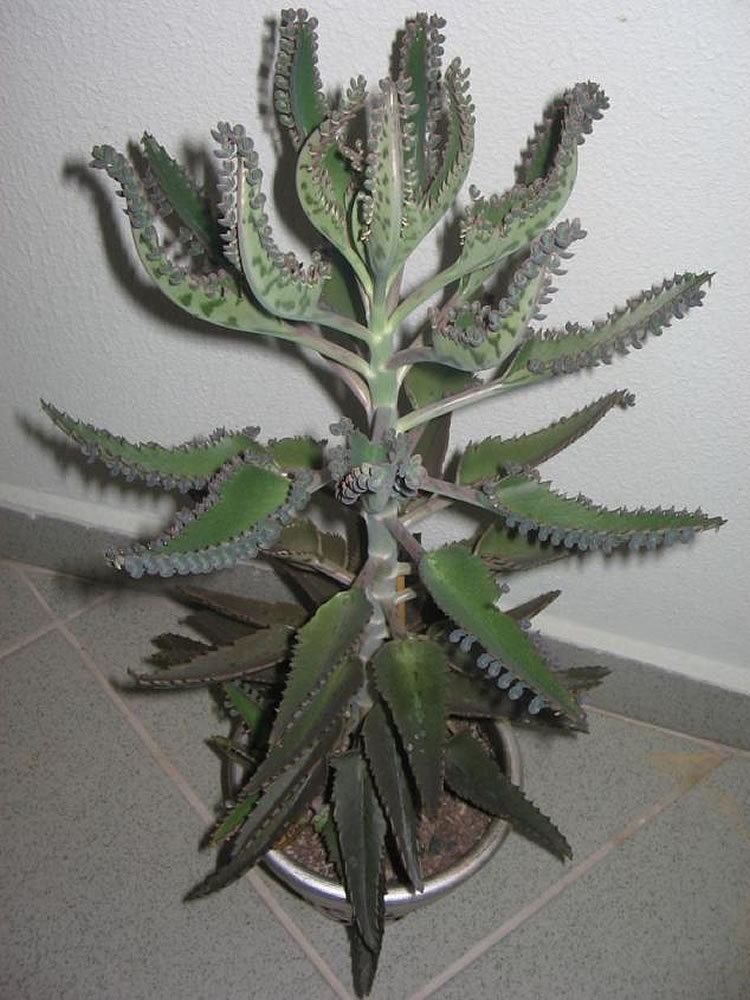
Plants of the genus Bryophyllum have sometimes been included in the genus Kalanchoe, where this species is known as Kalanchoe daigremontiana Hamet & Perrier.
Morphology

Plants grow up to 1 m (3 feet) tall and have opposite and whorled, fleshy oblong-lanceolate phylloclades which grow up to 20 cm (6-8 inches) long and 3.2 cm (1.25 inches) wide. They are green above and blotched with purple underneath. Phylloclade margins have spoon-shaped bulbiliferous spurs which bear plantlets which may form roots while still attached to phylloclades.
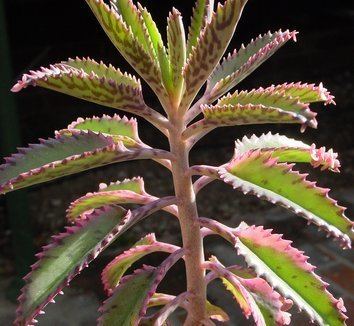
A plant may also develop lateral roots on its main stalk, as high up as 10–15 cm above the ground. A plant's upper phylloclades may grow large, causing its main stalk to bend downward. Then the lateral roots may enter soil and new vertical shoots may grow from the original shoot.
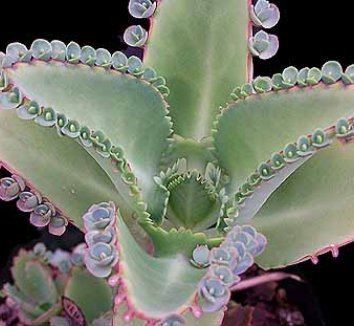
Bryophyllum daigremontianum has an umbrella-like terminal inflorescence (a compound cyme) of small bell-shaped, grayish pink (or sometimes orange) flowers. Flowering is, however, not an annual event and occurs sporadically if at all on some shoots. Particularly in climates with distinct seasonal temperature differences, flowering is most frequently observed at the beginning of a warm season. Indoor plants, as well as balcony plants which have been moved inside to survive the cold season, begin flowering in early winter.
As a succulent plant, B. daigremontianum can survive prolonged periods of drought with little or no water. During growth periods with higher temperatures and increased water supply, proper nutrition is needed, without which leaves will show deficiency symptoms like crippled growth and pustule-like lesions. The plant is not frost-hardy and typically dies if subjected to temperatures below freezing.
Physiology
Plants of the genus Bryophyllum as well as many other plants growing in arid regions photosynthesize via Crassulacean acid metabolism.
Distribution
B. daigremontianum is native to the Fiherenana River valley and Androhibolava mountains in southwest Madagascar. It has been introduced to numerous tropical and subtropical regions, such as Florida, Puerto Rico, Hawaii, Venezuela, and parts of the Canary Islands.
It can become an invasive plant and threaten natural ecosystems, especially in arid and semi-arid environments, where it can inhibit native-plant recruitment
